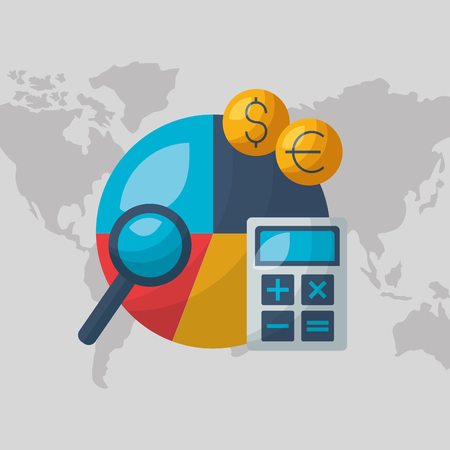Introduction to ETFs in UK Retirement Planning
Exchange-Traded Funds, commonly known as ETFs, have emerged as a cornerstone for many investors looking to build a robust retirement portfolio in the UK. Over the past decade, their popularity has surged among both seasoned professionals and those new to investing. But what exactly makes ETFs so appealing within the context of retirement planning? At their core, ETFs are investment funds traded on stock exchanges, much like individual shares. They typically track indices, sectors, commodities, or various asset classes, offering instant diversification at relatively low cost. For those planning their financial future, especially over the long term, this blend of flexibility, transparency, and cost-effectiveness is particularly valuable. As more Britons look towards self-directed retirement solutions—especially with options such as Self-Invested Personal Pensions (SIPPs) and Individual Savings Accounts (ISAs)—ETFs stand out as a versatile tool for building wealth steadily over time. In the following sections, we will explore how incorporating ETFs into your retirement strategy can help you navigate changing markets and secure greater financial independence for your later years.
Understanding SIPPs: The Role of ETFs
Self-Invested Personal Pensions (SIPPs) have become a cornerstone for UK residents seeking greater autonomy in their retirement planning. Unlike traditional pensions, SIPPs offer investors the flexibility to choose from a broad range of investments, including Exchange Traded Funds (ETFs). This flexibility is particularly appealing to those who wish to take a hands-on approach and diversify their pension portfolios efficiently.
Why Consider ETFs Within a SIPP?
ETFs are popular among SIPP holders due to their low costs, wide diversification, and ease of trading. Through a SIPP, individuals can access ETFs tracking various asset classes—from UK equities and global markets to bonds and alternative assets. This approach empowers investors to tailor their pension investments according to their risk tolerance and long-term objectives.
Key Tax Advantages of SIPPs with ETFs
| Tax Benefit | Description |
|---|---|
| Tax Relief on Contributions | Personal contributions receive 20% basic rate tax relief automatically; higher and additional rate taxpayers may claim further relief via self-assessment. |
| No Capital Gains Tax (CGT) | Any gains made from buying or selling ETFs within a SIPP are exempt from CGT, allowing investments to grow without the drag of taxation. |
| No Income Tax on Dividends/Reinvestments | Dividends received from ETF holdings are not subject to income tax while funds remain within the SIPP wrapper. |
| Pension Commencement Lump Sum | Up to 25% of your SIPP can typically be taken as a tax-free lump sum upon reaching retirement age. |
Practicalities of Holding ETFs in a SIPP
Selecting the right SIPP provider is essential, as platforms differ in terms of ETF selection, dealing fees, and account administration charges. Most major UK investment platforms support ETF trading within SIPPs, but it’s wise to compare costs and available tools before committing. Investors should also pay attention to rebalancing their ETF portfolio periodically, ensuring it aligns with their retirement goals as market conditions evolve. Overall, SIPPs provide an effective vehicle for integrating ETFs into long-term retirement strategies, granting both control and valuable tax efficiencies for diligent savers.

3. Using ISAs to Invest in ETFs for Retirement
Individual Savings Accounts (ISAs) are a cornerstone of tax-efficient investing in the UK, and they offer an accessible route for individuals looking to grow their retirement pot through Exchange-Traded Funds (ETFs). By understanding how ISAs work, investors can maximise their long-term savings and benefit from unique tax advantages.
ISA Structure and Annual Allowances
The main appeal of ISAs lies in their generous annual allowance. For the 2024/25 tax year, you can invest up to £20,000 across all your ISAs, including Stocks & Shares ISAs, which allow ETF investments. This allowance is reset every tax year, and it’s a “use it or lose it” opportunity—unused allowances cannot be carried forward.
How ISAs Can Be Leveraged for ETF Investing
With a Stocks & Shares ISA, you can buy and hold a wide range of ETFs tracking different markets, sectors, or asset classes. This flexibility enables diversification—a core principle in robust retirement planning. Whether you favour global equity ETFs, bond ETFs for stability, or even thematic funds, these can all be sheltered within your ISA wrapper.
Tax Efficiencies Unique to ISAs
The most compelling feature of ISAs is their tax efficiency. Any capital gains or dividends earned from ETFs held within an ISA are completely free from UK Capital Gains Tax (CGT) and Income Tax. This makes reinvesting dividends and compounding returns far more effective over the long term. Importantly, you do not need to declare ISA income or gains on your Self Assessment tax return.
Considerations and Limitations
While ISAs offer clear benefits, there are some points to consider. Firstly, withdrawals from an ISA are flexible—you can access your money at any time without penalty, but this also means discipline is needed to ensure funds remain earmarked for retirement. Secondly, unlike pensions such as SIPPs, there is no upfront tax relief on ISA contributions; however, the lack of withdrawal restrictions provides added flexibility in later life.
Building a Long-Term ETF Strategy within Your ISA
Using your ISA allowance each year to gradually build a diversified ETF portfolio is a prudent approach. Over decades, this strategy harnesses the power of compounding in a tax-free environment. Regular reviews and rebalancing help align your holdings with changing retirement goals and risk tolerance—making ISAs an integral part of many Britons’ long-term retirement plans.
4. Choosing the Right ETFs for a UK Retirement Portfolio
When constructing a retirement portfolio within a SIPP or ISA, selecting the right Exchange Traded Funds (ETFs) is essential to balance long-term growth, income generation, and effective risk management. For UK-based investors, it’s important to consider funds that are tax-efficient, listed on UK exchanges, and denominated in GBP where possible to avoid unnecessary currency exposure. Below, we’ll explore key considerations and options to help you make well-informed decisions.
Key Considerations for ETF Selection
- Growth Potential: Look for equity ETFs tracking broad indices like the FTSE All-Share or MSCI World, which offer diversified exposure to domestic and global markets.
- Income Generation: For those seeking reliable income, consider dividend-focused ETFs or bond ETFs that pay regular distributions. Check the distribution policy (accumulating vs. distributing) depending on your income needs.
- Risk Management: Diversification across sectors, geographies, and asset classes is vital. Blending equities with bonds or alternative assets can help smooth returns over time.
- Costs: Pay attention to Total Expense Ratios (TERs) as lower fees can significantly enhance long-term returns.
- Liquidity & Domicile: Favour ETFs that are UCITS-compliant and listed on the London Stock Exchange for regulatory protection and ease of trading.
Popular ETF Types for UK Retirement Investors
| ETF Category | Main Focus | Example Index/ETF |
|---|---|---|
| UK Equity | Domestic market growth & income | iShares Core FTSE 100 UCITS ETF |
| Global Equity | Diversification & long-term growth | Vanguard FTSE All-World UCITS ETF |
| Bonds (Gilts/Global) | Stability & income | Xtrackers II Gilts UCITS ETF |
| Dividend-Focused | Income generation | SPDR S&P UK Dividend Aristocrats UCITS ETF |
Blending Asset Classes for Balanced Growth
A prudent approach often involves blending equity ETFs for capital appreciation with bond or gilt ETFs for downside protection. For example, a typical allocation might look like 60% equities and 40% bonds when targeting moderate risk, but this can be adjusted as you near retirement age to prioritise capital preservation and income stability.
Sustainable and ESG Options
An increasing number of investors are also considering Environmental, Social and Governance (ESG) ETFs. These can align your investments with personal values while aiming for competitive returns, but always assess the underlying holdings and screening criteria to ensure they meet your expectations.
Selecting the right mix of ETFs tailored to your time horizon, risk tolerance, and retirement goals is crucial. Regularly review your portfolio in response to life changes or market conditions, making adjustments as needed to stay aligned with your objectives.
5. Cost Considerations and Common Pitfalls
When incorporating ETFs into your retirement planning via SIPPs or ISAs, it’s crucial to pay close attention to the various costs involved as well as common mistakes that can hinder long-term growth. Understanding these factors will help you make more informed decisions and avoid eroding your pension pot unnecessarily.
Key Costs of Investing in ETFs through SIPPs and ISAs
Firstly, every ETF comes with an ongoing charge, known as the Total Expense Ratio (TER) or Ongoing Charges Figure (OCF), which typically ranges between 0.05% and 0.7% per annum. While this might seem minor, over decades, even small differences can significantly impact your final outcomes.
Secondly, when using SIPPs or ISAs, you may encounter platform fees charged by providers for holding and administering your investments. These can be a flat annual fee or a percentage of your assets—be sure to compare providers, as charges vary widely across the market. Trading fees are another consideration: although many platforms now offer low-cost or commission-free ETF trades, some still charge per transaction. Frequent trading within your portfolio can therefore add up quickly.
Beware of Currency Conversion and Bid-Offer Spreads
If you invest in ETFs listed in foreign currencies (such as US dollar-denominated funds), you’ll likely incur currency conversion fees. In addition, always check the bid-offer spread—the difference between the buying and selling price—which tends to be narrower on popular ETFs but can widen for less liquid options, particularly during periods of market stress.
Common Pitfalls UK Investors Should Avoid
One frequent mistake is underestimating the impact of costs over the long term. Many investors focus solely on headline returns without accounting for charges that steadily erode performance. Another pitfall is poor diversification: overconcentration in certain sectors or regions can expose your retirement savings to unnecessary risk. Ensure your ETF selection covers a broad range of assets suited to your time horizon and risk appetite.
Neglecting Regular Reviews and Tax Allowances
Failing to periodically review your investment strategy is another common oversight. As you approach retirement, your risk profile will naturally change—adjusting your asset allocation is essential for safeguarding your nest egg. Additionally, don’t forget to fully utilise both SIPP and ISA allowances each tax year; neglecting these could mean missing out on valuable tax benefits unique to UK savers.
Summary
In short, being mindful of the total cost of investing in ETFs through SIPPs and ISAs—alongside avoiding common errors such as neglecting diversification or failing to review your portfolio—can help you build a more resilient plan for retirement in the UK.
6. Long-term Strategies and Best Practices for UK Investors
When incorporating ETFs into your retirement planning through SIPPs or ISAs, adopting a disciplined long-term strategy is essential for maximising outcomes. The cornerstone of effective investing lies in maintaining a diversified portfolio that aligns with your time horizon and risk tolerance. Regular rebalancing is crucial; over time, market movements can cause your asset allocation to drift from its original target. By periodically reviewing your holdings and rebalancing back to your desired mix, you help manage risk and keep your investments on track.
Another key practice is to conduct annual reviews of your ETF allocations within both SIPPs and ISAs. These reviews allow you to assess performance, costs, and the suitability of each ETF relative to any changes in your personal circumstances or retirement objectives. It’s also prudent to remain vigilant about regulatory changes that could affect tax benefits or contribution limits for ISAs and SIPPs. UK rules can evolve, so staying informed ensures you continue to make the most of available allowances and avoid unexpected pitfalls.
Finally, resist the urge to react impulsively to short-term market volatility. Successful long-term investors in the UK typically adhere to their investment plan, focusing on gradual wealth accumulation rather than frequent trading. Combining these best practices—regular rebalancing, thorough reviews, and regulatory awareness—provides a robust framework for building a resilient retirement portfolio using ETFs within SIPPs and ISAs.


